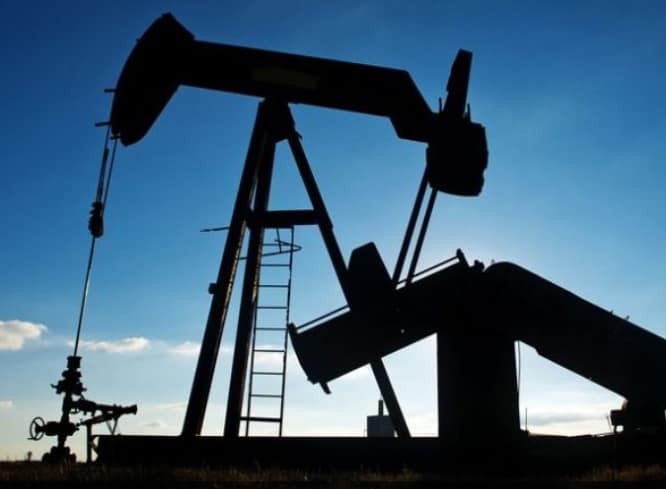Polymers Petrochemicals Biopackaging Recycling 04-03-2019 - Arhive
Crude Oil Prices Trend

Polymers Polypropylene Petrochemicals Prices
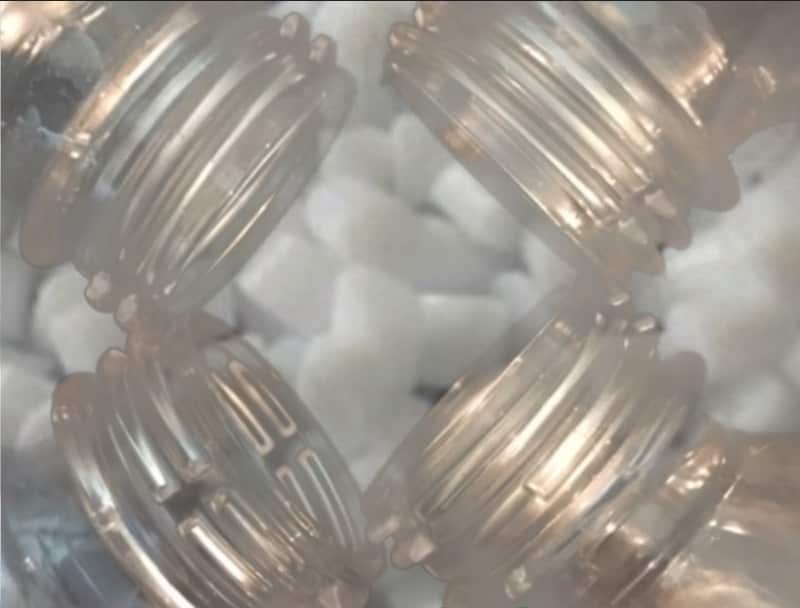
Several paraxylene buyers in the Asian market put forward their counter-proposals for the March contract price of material at USD990-1 020 per ton, market sources told ICIS on Thursday.
Earlier this week, Asian paraxylene manufacturers nominated their March contract prices at USD1,190–1,210 per tonne, CFR Asia.
The February contract price of paraxylene in the region was agreed at around USD1,050 per tonne, CFR Asia.

More than 600,000 tonnes of plastic packaging – out of 900,000 tonnes used – was not recycled last year
Of the plastic that is collected for recycling in Australia, nearly 20% gets exported. Photograph: Tracey Nearmy/AAP
Only a third of Australia’s plastic packaging waste ends up being recycled, according to a new report.
The study, conducted by the University of Technology Sydney and commissioned by the Australian Packaging Covenant Organisation (APCO), tracked different kinds of packaging waste in the 2017-18 financial year.
It estimated that only 56% of all packaging waste in Australia was recovered and recycled. Of that, 72% of paper packaging was recycled, but only 32% of plastics.
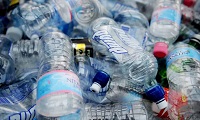
Plastic bottles can be ‘upcycled’ to create materials strong enough to make car parts and wind turbine blades, experts say.
Single use containers can be transformed into more durable materials by reducing them to their chemical building blocks.
These blocks are then mixed with plant fibres and a hardening agent is added to complete the process.
The resulting fibre-reinforced plastics are two or three times more valuable than the plastic polyethylene terephthalate (PET) from which the bottles were originally made.
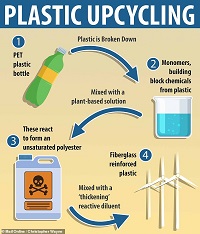
When the giant P-67 floating oil production vessel lit its flare tower earlier this month, it marked the start of a Brazilian supply boom that’s poised to challenge Opec’s efforts to balance the global market.
The mammoth facility – long and wide enough to fit an American football field – is the first of four similar platforms that will begin pumping crude this year, lifting Brazilian output by roughly 365 000 barrels a day, its largest annual increase in at least 20 years, according to the International Energy Agency.
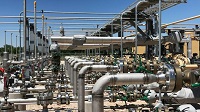
The UN has been warning that by 2050 our oceans may contain more plastic waste than fish – a disconcerting outlook given our dependency on healthy ecosystems to survive.
Now, Israeli researchers say they have developed a process to make biodegradable plastics using the ocean’s own resources – algae. And the invention could become a viable counter to enormous amounts of plastic already found in oceans.
In six decades, humans have produced 8.3 billion metric tons of plastic, only nine percent of which has been recycled, according to a 2018 joint report by the National Geographic Society and Great Britain’s Royal Statistical Society. Since plastic takes over 400 years to degrade, many of it still exists in some form in landfills and in our oceans, harming wildlife and marine life and ecosystems.
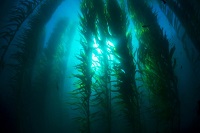
On Monday, January 28th, Treasury Secretary Steven Mnuchin announced coercive measures against the main Venezuelan companies operating in the United States, accusing them of “helping prevent Maduro from continuing to divert Venezuela’s assets and preserve these assets. for the Venezuelan people, The executive order places the institutions of the entity, including the Central Bank of Venezuela (BCV) and PDVSA as the target of sanctions.
In addition to blocking $ 7 billion worth of assets, the ban on US and allied companies to negotiate with PDVSA would result in a loss of $ 11 billion additional, no more for exports.
In an analysis published by the EIA, it is denied that sanctions against PDVSA will have significant consequences on the operation of U.S. refineries. Apparently, the oil companies that supplied Venezuelan oil were reducing their imports by providing for this scenario.
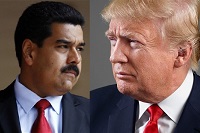
Production costs for purified terephthalic acid (PTA) and dimethyl terephthalate (DMT) are under pressure to increase if the dominant Asian market is to be adhered to, but not as much as the markets were originally anticipating.
– PX prices end downturn
– PET bottling season imminent
– Economic mood affects PTA and DMT
PX PRICES
Paraxylene (PX) prices ended a four-month downturn in February, and look set to continue to rise. European values tend to be influenced by Asian dynamics, as can be seen in the following graph.
PET SEASON
The seasonal uptick in the PET bottling season is imminent and March is usually when the buying frenzy begins.
While contractual offtake is decent, buyers are reluctant when it comes to spot purchases. This is partly due to import commitments and the general macroeconomic mood.

With an eye toward a circular economy, technology developers are advancing a host of new approaches to chemical recycling of post-use commodity plastics
Plastics are indispensable parts of almost every sector of the economy, with wide-ranging economic, environmental and convenience benefits in their use stage.
But increasingly, the sheer volume of plastics produced (estimated at well over 300 million metric tons annually) presents environmental risks if the material is not captured, and represents a waste of resources if the material is disposed of in landfills.
Currently, only a small fraction of commodity plastics are recycled globally (some estimates peg the number at 14%), while the majority end up in landfills, incinerators or in the environment, particularly the ocean.
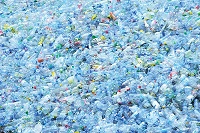
Petrochemical giant ExxonMobil will fund the construction of a polypropylene production unit in Baton Rouge, Texas, that will expand capacity along the US Gulf Coast by up to 450,000 tonnes per year.
Construction is set to begin this year, with start-up anticipated by 2021, and 65 permanent jobs likely once completed. The company first raised the possibility of such an expansion a year ago, adding that a final investment decision would follow by the end of 2018.
The facility will expand the production capacity of ExxonMobil’s latest Achieve Advanced Polypropylene grades, which the company claims eliminate trade-offs in performance, processing and end-of-life handling, pushing the boundaries in packaging design.
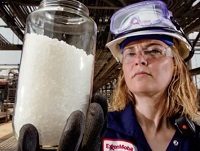
Plastics Recycling Update iconA number of companies have announced developments in technologies for breaking down plastics for use in other products. Here are a few of the notable news items.
Polyester fiber recovery: A Taiwanese company developed a chemical recycling technology that recovers polyester from mixed-material textile.
Recycling International reports Far Eastern New Century (FENC) developed a process through which polyester is dissolved and other polymers and dyes are filtered out.
Called TopGreen rTex, the technology can be used to recover polyester from spandex-blended polyester fabrics.
FENC, a conglomerate involved in PET and synthetic fiber production, has worked for years with Adidas to incorporate recovered marine plastics into shoes.
![]()
Ultra high barrier variants for packaging industry
Participating at the Indiaplast 2019 show in Greater Noida, Uflex has come with multiple solutions for all segments of the packaging industry. Apart from other solutions, Uflex film division has innovative products for flexible packaging on offer at the show.
DK Dosi, joint president – Film Division of Uflex said to Packaging South Asia, “Uflex as a company has put up a big stand here. We are presenting all our products and innovations at this show. From our film division we are specifically targeting six new products here. In the polyester segment, we have three new products.
The latest one that we are offering today for the first time in India is the easy-to-tear pouch. This film is yet to be commercially launched but it will hit the market in the coming month. Starting from this month we will be fully equipped to supply to the market.
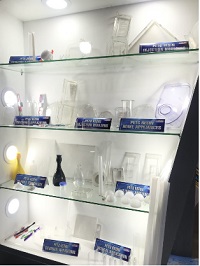
- Japan proposes U.N. working group to tackle ocean microplastics pollution
Japan has submitted to the United Nations a draft resolution to establish a working group for coordinating efforts toward combating ocean microplastics pollution, people close to the matter said Saturday.
Norway has tabled a similar resolution, and the two countries have been discussing combining their proposals for the fourth session of the U.N. Environmental Assembly in Nairobi starting on March 11, they said.
The resolution, if adopted, would create a new international framework to accelerate study on and promote measures to tackle the emerging issue for food security and marine life.

Negotiations over March shipments of suspension polyvinyl chloride (SPVC) began in the Russian market this week, with producers separately announcing further price increases for shipments to the domestic market, according to ICIS-MRC Price report.
Prices of Russian polyvinyl chloride (PVC) have already risen twice in 2019, and this is expected to continue in March. Dwindling stocks and a lack of large quantities of import material are the main factors for further price increases.
Russian producers announced price increases of Rb1,000-2,000/tonne for March deliveries, depending on the resin.
The current situation is similar to the last year’s trend, when PVC prices rose monthly for Russian consumers until September, and converters were forced pass on costs.
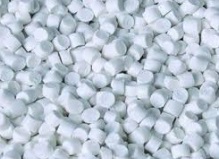
Congress has been debating the No Oil Producing and Exporting Cartels Act, or “NOPEC,” which would make international oil cartels illegal, exposing countries that coordinate on the price of oil to the risk of litigation in US courts.
The odds are pretty good that anti-OPEC (Organization of the Petroleum Exporting Countries) legislation could eventually win the approval of Congress, given rising anti-Russian and Saudi Arabia sentiment, including anger over President Trump’s response to the murder of journalist Jamal Khashoggi, and the subsequent resurgence of progressive Democrats in the House of Representatives.
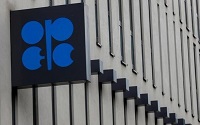
Shima Seiki, leading computerised flat knitting technologist of Wakayama, Japan, has released a major update to its smart device app VR-knit.com. New features include an AR mode and ultra-realistic knit fabric viewer, enabling a richer virtual knit experience. Shima Seiki is a pioneer in complete garment manufacturing technology called Wholegarment.
VR-knit.com was initially released in November 2017 as an app for showcasing Shima Seiki’s original knit collection as 3D images in virtual space. Knitwear can be browsed by trend theme and rotated 360°, and with the use of VR goggles, the collection can be enjoyed in 3D.

Abstract:
Researchers have layered different mineral forms of titanium oxide on top of one another to improve perovskite-type solar cell efficiency by one-sixth. The layered titanium oxide layer was better able to transport electrons from the center of the cell to its electrodes. This novel approach could be used to fabricate even more efficient perovskite-type solar cells in future.
Layering titanium oxide’s different mineral forms for better solar cells: Kanazawa University-led researchers layer two different mineral forms of titanium oxide to improve electron flow at the negative electrode for better metal halide perovskite-type solar cells
While most solar cells are made of silicon, such cells are difficult to manufacture, requiring vacuum chambers and temperatures above 1000 °C. Research efforts have therefore recently focused on a new type of solar cell, based on metal halide perovskites. Perovskite solutions can be inexpensively printed to create more efficient, inexpensive solar cells.

Yarn Expo Spring 2019 will see a significant rise in exhibitors at the Fancy Yarn Zone, with 125 exhibitors already set to showcase their latest fancy yarn collections. Yarn Expo, be held in Shanghai, comes out with new options each edition, with a wide array of yarn and fibre products, from fancy yarn to high-quality wool yarn, cotton, and chemical fibres.
Over 460 exhibitors from 11 countries and regions will join the fair, to be held during March 12-14. These include China, France, Hong Kong, India, Indonesia, Korea, Pakistan, Singapore, Uzbekistan, Vietnam, and newcomer country Egypt.

Widening fiscal deficits to warrant higher government borrowings
Dubai: In the six GCC countries, overall real GDP growth is set to ease from 2.2 per cent in 2018 to 1.8 per cent in 2019, dragged down by compliance with the recent Opec+ deal, according to latest forecasts from the Institute of International Finance (IIF).
Despite a decline in overall GDP growth from lower exports and potentially lower oil prices, the IIF sees the non-oil growth accelerating from 2.7 per cent in 2018 to 3.3 per cent in 2019 supported by fiscal expansion, including the implementation of major public investment projects.
